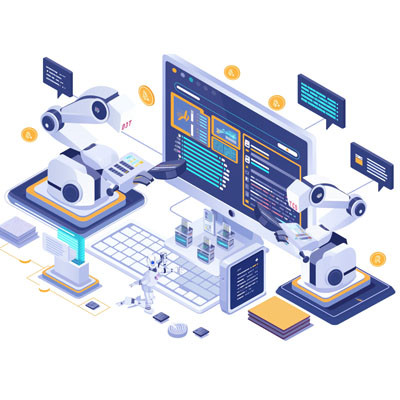Datalyst Blog
Automation has been a hot-button issue in the business world over the past few years. Many business owners have tried to find ways to automate some of their operations, while workers wonder if this strategy develops as people in the know suggest it will, they could be out of a job. We think that automation is actually a massive benefit for organizations and workers alike. This month we will go through a few tools that small businesses can easily leverage to use automation to their advantage by taking a look at some of the tools that companies depend on.
It’s no secret that automation is one of the major trends that most businesses have tried to incorporate into their business plans, most with some middling success. The problem becomes that many businesses don’t really have a strategy for building out automated tools for their business, so they may not be able to take advantage of the benefits automation can bring.
The way you invest your business’ IT budget will have a considerable impact on how it performs. If your technology dollars are well spent you should see improvement year-over-year. Technology improves time management and allows for more automation than ever, not to mention the cost savings you see as a result. Let’s briefly discuss the IT budgeting process and how to build budgeting priorities that work.
We’re always talking about boosting productivity and the role your technology has in that quest. What we don’t always talk about is how boosting innovation can help free up your employees to produce better results. It’s the same technology, and it can have multiple benefits. In this week’s blog, we’ll discuss how focusing on how these two thoughts can be one and the same.
For years, we’ve heard about how machines are coming for our jobs. We may even know some people who have been replaced by machines of some sort. This has given workers an overarching fear that once the machines are smart and capable enough to do what they do, that they will be out on their cans with few real options. This is mostly a fallacy. Today, we will explore the notion that machines are out for our jobs and how they may actually work to make our jobs better.
The most successful businesses are those that are always seeking to improve what they offer—oftentimes, taking a successful element and simply making it more efficient to deliver. In the past, this basically meant that businesses needed to have their employees work more quickly. However, today’s improved technology and the automation that it makes possible have delivered a much more consistent option.
In modern businesses, automation can be implemented in a lot of ways, but for small businesses, it may be more difficult to find ways to incorporate time-saving automation. In this week’s blog we’ve decided to point out a few ways even the smallest business can use automation to their advantage and give their employees the freedom to focus on revenue creating processes.
If you ask a person that has been using the same technology for years what they would like to see in new technology, you’ll often get the answer, “for it to do the work for me.” This is a popular response that is almost always delivered as a joke. With technology going the way it is, it’s not as funny as it once was. Today, automated tools are being developed that work to actually do a lot of that work for you. This can be both a detriment and a benefit for your staff. Today, we’ll take a look at both.
Automation has helped many businesses improve their output and efficiency, but what is the cost to the people that work for these organizations? Many systems rely on the autonomy of artificial intelligence systems to keep certain tasks and workflows on point. Automation could replace up to a quarter of the current workforce in the next ten years, so people are naturally skeptical and worried about how safe their jobs are going to be with more and more businesses utilizing software automation.
Automation has been a hot button term for some time. Whether it is in reference to robots that manufacturers use to make their assembly lines more effective, the integrated workflows that today’s customer relationship management software presents, or A.I. crawling through mounds of data to help an entrepreneur better understand his/her business, automation is helping businesses move faster and be more agile. Today, we will look at how organizations are using automation, and how, even if it isn’t a big part of your business strategy today, it will need to be in the future.
There are certain processes within an organization that take a considerable amount of time to do. These include applying patches, monitoring network traffic, and updating software as needed. While it might seem like something your business can handle on its own, some small organizations struggle to accomplish everything they set out to do--especially with a limited budget or workforce. Our staff’s powerful monitoring and management tool can aid in this initiative.













